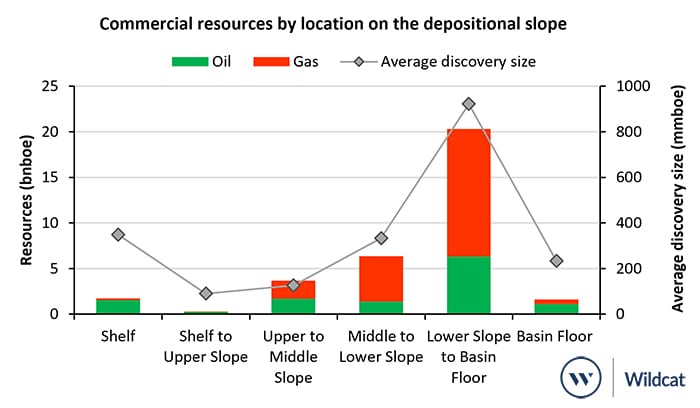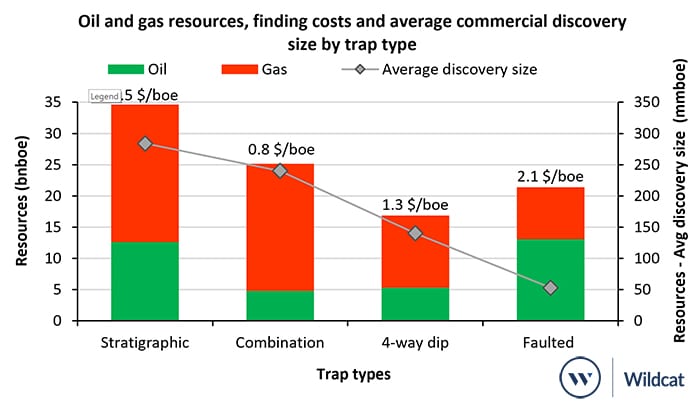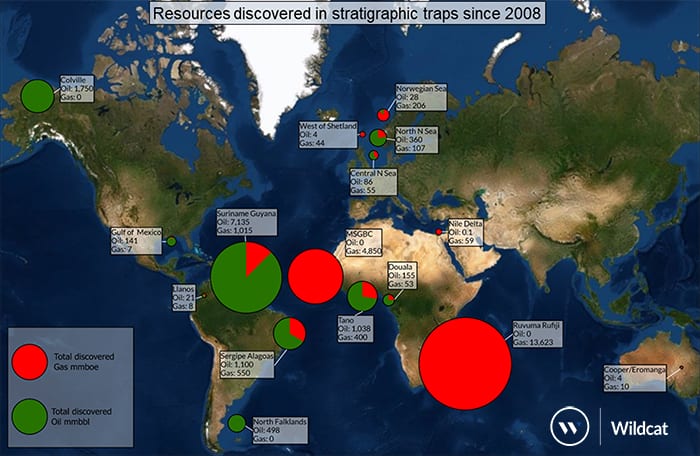More oil and gas were discovered in stratigraphic traps than any other trap type in the last decade and the Guyana-Suriname basin remains one of the most prolific. Excelling in stratigraphic trap exploration is now the key to top quartile exploration performance, energy market research and intelligence company Westwood said in a new report.
Based on the report, the company said it has analysed stratigraphic trap exploration between 2008 and 2019 in 66 basins and 113 different plays. It found that 35 bnboe has been discovered in clastic stratigraphic traps since 2008, comprised of 22 bnboe (132 tcf) of gas and 13 bnbbl of oil. Seventy five percent of the oil resources and 95% of the gas resources were discovered in deep water.
“The most prolific basins were Suriname-Guyana, the MSGBC, the Rovuma-Rufiji and the Colville, where major new plays dominated by stratigraphic traps emerged in the period. Upper Cretaceous aged stratigraphic traps delivered 42 commercial discoveries, with a total of 9 bnbbl of oil and 39 tcf of gas, of which 7 bnbbl of the oil is in the Suriname-Guyana basin and 20 tcf is in the MSGBC basin,” Westwood said.
US oil major ExxonMobil has to date found more than 8 billion barrels of oil equivalent resources at the Stabroek Block offshore Guyana and Apache’s two discoveries at block 58 offshore Suriname exceed 300 million barrels.
Westwood said Oligocene aged plays delivered 7 commercial discoveries with a total 40 tcf of gas – of which 36 tcf was in the Ruvuma basin in Mozambique.
Westwood said there were also notable disappointing campaigns targeting stratigraphic traps in the Carnarvon, Sierra Leone-Liberia and Central North Sea basins from which important lessons have been learned.
“Stratigraphic traps had a larger average discovery size of 280 mmboe, and a lower drilling finding cost of 0.5 $/boe, compared to other traps types in the period. Stratigraphic traps had a commercial success rate (CSR) of 32%, in line with other trap types,” Westwood said. The evidence shows they are not higher risk than other traps, contrary to many explorers’ preconceptions.

It said industry is also getting better at exploring for stratigraphic traps with the CSR increasing to 50% in the 2017-2019 period from 21% between 2014-2016. The more effective use of seismic attributes and better integration with geological models has had an impact in some basins.
Marine turbidite sandstones in stratigraphic traps in passive margin settings were the most targeted delivering 31 bnboe (90%) of discovered commercial resources. For marine turbidite plays, stratigraphic traps on graded slopes in the lower slope to basin floor settings performed best in terms of both discovered volumes and success rates. Finding stacked traps or extensive traps was key to commercial success.

Westwood said commercial deep-water standalone discoveries of >300 mmbbl in clastic reservoirs are now most likely to be found in stratigraphic traps and traps with stratigraphic components.




